Tag: Kansas State Department of Education
-

School choice and funding
Opponents of school choice programs argue the programs harm traditional public schools, both financially and in their ability to serve their remaining students. Evidence does not support this position.
-

VIDEO: KPERS payments and Kansas schools
There is a claim that a recent change in the handling of KPERS payments falsely inflates school spending. The Kansas State Department of Education says otherwise.
-
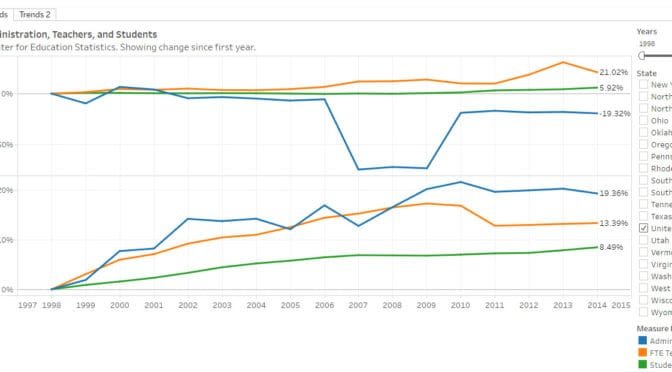
School staffing and students
Trends for the nation and each state in teachers, administrators, and students, presented in an interactive visualization.
-

Kansas government ‘hollowed-out’
Is Kansas government “hollowed-out” even though spending is rising?
-

Kansas City Star as critic, or apologist
An editorial in the Kansas City Star criticizes a Kansas free-market think tank.
-
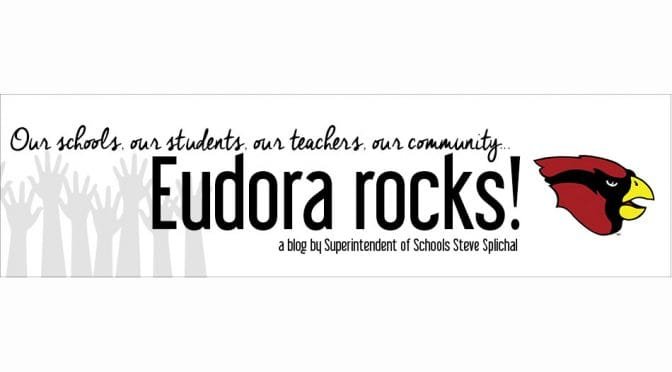
A Kansas school superintendent writes about school finance
A Kansas school superintendent explains school financing, but leaves out a large portion of the funds that flow to his district.
-

A plea to a legislator regarding Kansas schools
On Facebook, a citizen makes an appeal to her cousin, who is a member of the Kansas Legislature.
-
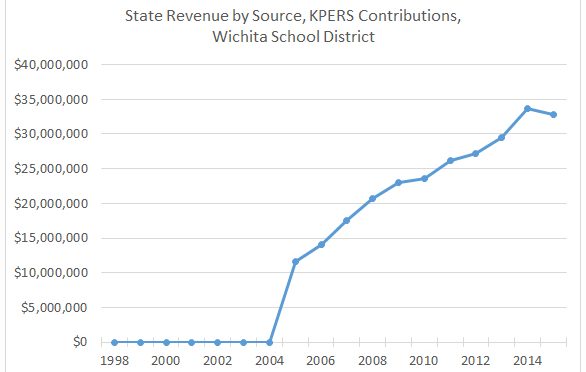
KPERS payments and Kansas schools
There is a claim that a recent change in the handling of KPERS payments falsely inflates school spending. The Kansas State Department of Education says otherwise.
-
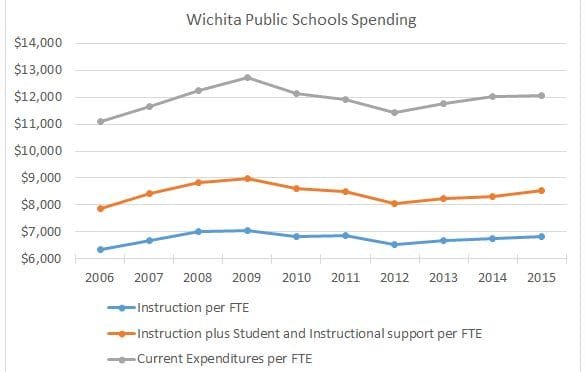
Wichita school spending
Spending by the Wichita public school district, adjusted for inflation and enrollment.
-
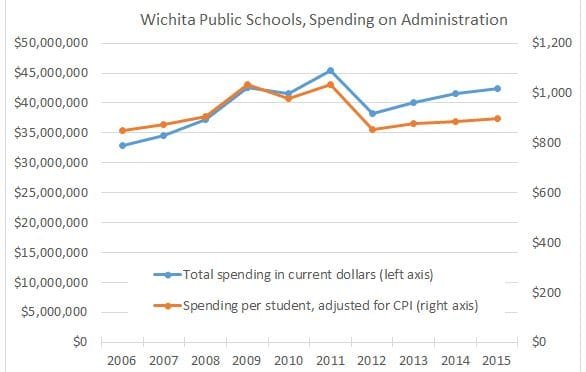
Wichita school district spending on administration
Could the Wichita public school district reduce spending on administration to previous levels?
-
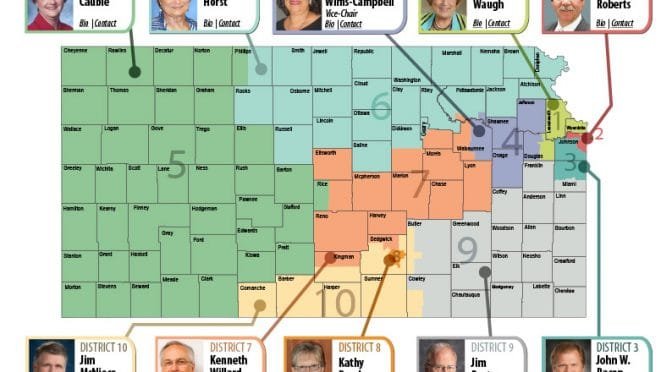
Kansas state school board member should practice what he preaches
A Kansas State School Board member urges political leaders to “tell the whole story” but doesn’t practice what he preaches, writes Dave Trabert of Kansas Policy Institute..
-
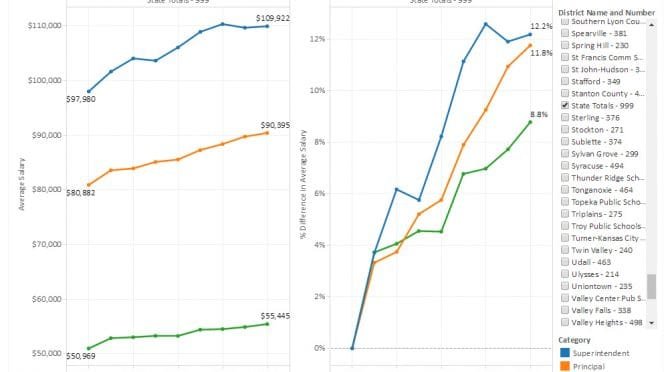
Kansas school salaries
Kansas school salaries for superintendents, principals, and teachers presented in an interactive visualization for each district, updated for 2016 data.